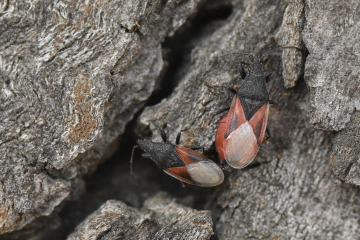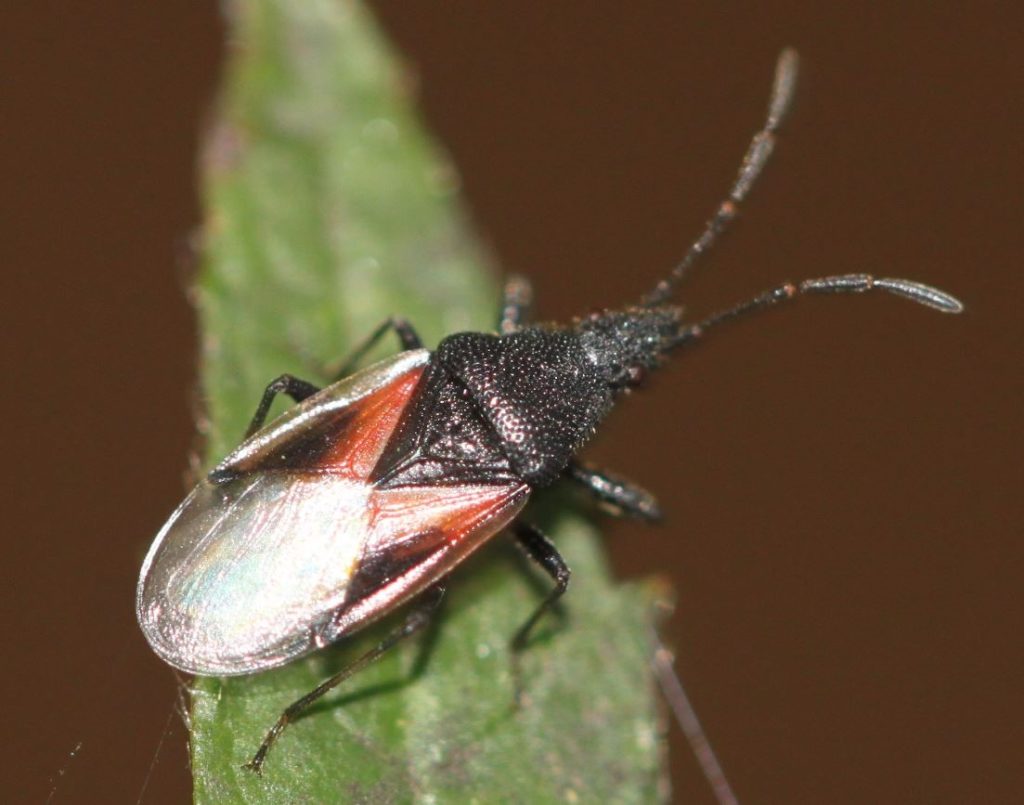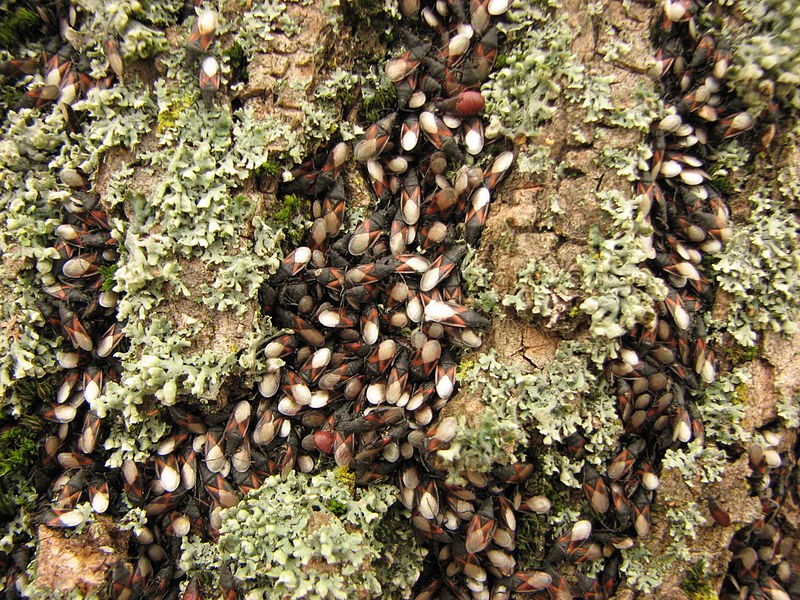
Invasive species in Poland – local example of global changes.
"May you live in interesting times" - Oxycarenus lavaterae and climate change
Although the old Chinese proverb sounds like a promise of extraordinary and positive impressions, it is essentially a curse that heralds the arrival of evil. We can say that today, in the 21st century, we live … in interesting times. Climate change underlies many natural anomalies that may be interesting, but at the same time they should lead to reflection. It is time to consider one of the symptoms of “interesting times”, namely the migration of the seed bug Oxycarenus lavaterae.
Seed bug - an indicator of climate change?
The world around us, together with all biotic and abiotic elements, is part of a dynamic structure. In the era of global economy, product migration and climate change, the living part of our planet, is constantly changing. Plants, animals and other organisms move to different places where their presence has not been recorded so far.
In Poland, there are numerous species that appeared as a result of human activity, and then got out of human control, sometimes becoming invasive organisms threatening the local flora and fauna. Suffice it to mention organisms such as Colorado potato beetle (Leptinotarsa decemlineata), Chinese mitten crab (Eriocheir sinensis) or raccoon (Procyon lotor). In recent weeks, there has been loud talk about another species – the seed bug (Oxycarenus lavaterae). It is on his example that we will take a closer look at climatic conditions affecting dynamic changes in the world of nature that have taken place in recent years. It is also worth adding here that the area of Poland is no exception. Each country is struggling with its examples from living in “interesting times.”

Fig. 1: The seed bug Oxycarenus lavaterae (source: Wikimedia Commons).
The occurrence of seed bug was first detected in Poland in 2016 in Rzeszów (Hebda G. et al., 2016). The next published sites of this species in Poland are Cieszyn in the Western Beskids and Brzeg in Lower Silesia. In recent weeks, information about subsequent mass appearances of seed bug appears in various media. Why such interest in this species? Probably the main reason is the fact that its mass appearance is observed just in the winter months, and therefore in the period rarely associated with significant excitation of flora or fauna.
The seed bug is an organism that belongs to the order of the Hymoptera (Heteroptera) genus Lygaeoidea, family Oxycarenidae. It is a species widespread in the Palearctic region, probably came to Europe from northern Africa and west Asia (Kment P., 2009; Kalushkov P. et al., 2010). Until recently, in Europe, it was found in southern parts of the continent, in countries belonging to the Mediterranean basin, which is due to favourable climate conditions. In the last 20 years, the area where this species is observed has shifted northwards. Such a dynamic shift in the range of occurrence to areas with a cooler climate may result from changes in the global climate conditions of our planet.
Extremely spectacular, but also at first glance, the disturbing behaviour of the seed bug is the mass accumulation of adults in the autumn-winter period on lime trunks in bark cracks (photo below), often from the south side of the trunk (where favourable thermal conditions occur due to solar radiation). The number of such clusters can be very diverse – from several hundred to even tens of thousands of individuals (Lis B. et al., 2019). Thanks to this behaviour, insects have a better chance of protecting themselves against the negative effects of low temperature. Research to date indicates that the seed bugs in the observed aggregations are able to withstand no damage to temperatures down to -10ºC. However, if the temperature is kept down to -15 ° C for several days, insect mortality can reach up to 99%. There are also cases where such low temperatures led to the extinction of entire populations of the seed bug (among others in the Czech Republic at the turn of 2005/2006).

Fig. 2: Wintering seed bug in the form of aggregation on linden trunk (source: Wikimedia Commons).
From the above facts, it can be concluded that the recently observed invasion to the north will last as long as winter temperatures do not fall below -15oC. Therefore, we could assume that this is a temporary situation and there are no reasons to worry, especially since this species is not considered to be particularly burdensome for native flora and fauna. On the other hand, it is worth reflecting on whether such a long period of favourable for the bug climatic conditions (after all, the movement of the population from the Mediterranean basin to Poland took decades) is just an anomaly or maybe a long-lasting trend indicating the direction of climate change taking place in recent decades on Earth?
Climate puzzles
Our planet’s climate is a subject to constant fluctuations. The diagram below shows the temperature changes over the last 450,000 years (EPICA Community Members 2004, Petit et al., 1999). As we can see, we are at the moment in the warm period, which is not (so far) the period of the highest temperatures observed in the presented timeline. We could assume that nothing unusual happens – there were several warmer periods and the recently observed increase in temperature is part of natural fluctuations in climatic conditions.

Fig. 3: Earth’s temperature changes over the last 450,000 years (source: Wikimedia Commons).
However, anxiety should be caused by the data presented in the next diagram showing CO2 concentration in a similar period of time. This gas, along with such substances as methane or steam, is considered one of the main determinants of the greenhouse effect. This phenomenon in itself is of course a necessary factor for the development of life on our planet. However, observation of the diagram indicates a very worrying fact: a dramatic jump in carbon dioxide concentration since the beginning of the industrial revolution (Fisher et al., 1999). From around 280 ppm, CO2 increased to 412 ppm in February 2020. Something like this is not observed in earlier periods of the time range shown.
In addition, if we compare both graphs, we will notice that temperature increases and decreases are significantly correlated with changes in CO2 in the atmosphere. Given the above, we can expect a further increase in temperature on our planet.

Fig. 3: Changes of CO2 concentration in the last 400 hundred years (source: Wikimedia Commons).
It is difficult to say how far-reaching these changes will be, because there are many models that take into account, among others, different levels of future CO2 emissions, deforestation or the amount of water vapor in the atmosphere. All these models, however, indicate a sharp increase in global average temperature in a very short time (IPCC 2007). Such rapid temperature changes were previously observed on our planet, but were associated with sudden global phenomena such as volcanic eruptions or meteor shocks. We currently do not observe any natural processes that could lead to such a significant increase in the concentration of CO2 in the atmosphere. The only reasonable explanation for this process seems to be linking it to anthropogenic emissions, which accelerated rapidly with the beginning of the industrial revolution.

Fig. 3: Expected changes in global temperature on Earth based on various climate models (źródło: Wikimedia Commons).
What about Oxycarenus lavaterae?
Considering the climatic data presented above, it can be concluded that Oxycarenus lavaterae, commonly known as the Mediterranean bedbug, will be getting better in our country. Of course, there may be occasional deadly temperatures for him, but all indications are that in the long run we will rather have to get used to his presence in Poland. Fortunately, this species, although quite spectacularly wintering, is not particularly dangerous for our native fauna and flora.
O. lavaterae is just one example of changes occurring in the natural world. Progressing land desiccation due to lack of rainfall results in a change in the vegetation structure. In water reservoirs, due to their overheating and over-fertilization, cyanobacterial blooms will occur more often. Ringed alexandrettes have recently found their home in Poland – parrots that originally appeared in Africa. What other species will appear in our country? What will be their impact on native nature? It is difficult to say unequivocally because the current situation is extremely dynamic.
Importantly, global warming is not just about changes in the structure of plant and animal populations. Glaciers and the processes to which they are subject play a huge role in this climatic puzzle. Currently, glaciers around the world are melting, resulting in rising sea levels of oceans and oceans. Permafrost disappears, which increases the release of methane and CO2, which until now have been trapped there. In this situation, once again, the well-known proverb comes to mind: “May you live in interesting times” – indeed, this is probably not the end of the story about interesting times and we are facing further global changes that will radically change the conditions of life on Earth.
